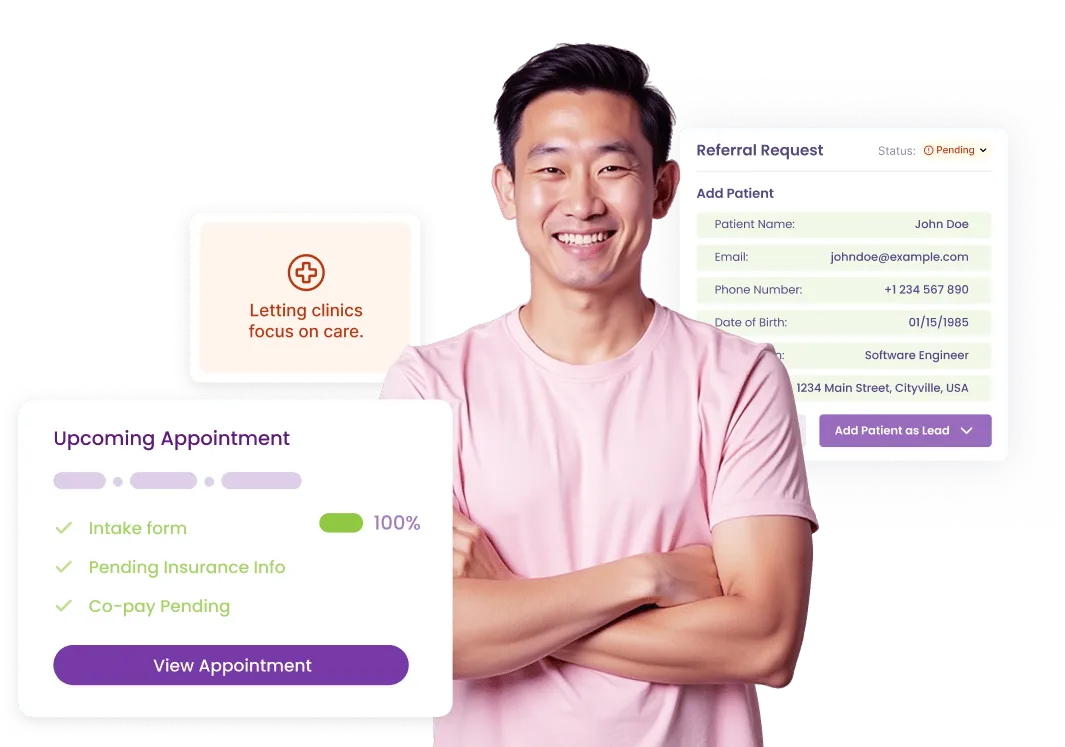99492 – Care Management / Collaborative Care Service
CPT code 99492 represents a distinct mental or behavioral health service, including evaluation, therapy, or care coordination.
What is CPT
99492
?
99492 pertains to collaborative care management services, specifically designed to enhance the integration of mental health services within primary care settings. This code is utilized for the initial 70 minutes of care coordination involving behavioral health interventions. Providers are required to document clinical activities that meet the code's definition, ensuring that notes reflect evidence-based practices, established treatment goals, and specific interventions employed during the session. It is crucial to maintain a clear record of measurable patient progress. When billing this time-based code, precise documentation of start and stop times is essential to justify the billed duration and to comply with payer requirements.

Documentation Tips
Accurate documentation is vital when billing for time-based psychotherapy services, including 99492. Clinicians should document start and stop times for each interaction, ensuring that the therapeutic modality or assessment instrument utilized is clearly indicated. Additionally, providers should record the clinical focus of the session, the patient's response to interventions, and a detailed follow-up plan. For scored instruments, retain copies of completed assessment tools to substantiate the services provided. In scenarios involving telehealth, it is imperative to document the patient's consent and the specific platform used for the session. Adopting a structured documentation format, such as SOAP (Subjective, Objective, Assessment, Plan) or DAP (Data, Assessment, Plan), can enhance audit readiness and improve overall documentation quality.

At a Glance
- Service Type: Care Management
- Use Case: Collaborative Care
- Typical Setting: Outpatient clinic or telehealth (dependent on payer policy)
- Billing Unit: Per session or per instrument utilized (varies by specific codes)
- Common Pairings: 90791, 96127, psychotherapy codes (e.g., 90834, 90837)
Billing Examples
Clinical interactions should consistently connect findings to the treatment planning process and measurable goals. For instance, a clinician might document a session where they utilized the PHQ-9 assessment tool to evaluate a patient's depression severity. The note could reflect the patient's initial score, the interventions discussed (such as cognitive-behavioral therapy techniques), and the agreed-upon follow-up strategies. This level of detail in documentation not only supports the medical necessity of the billed service but also aids in establishing a clear treatment trajectory for the patient.
Compliance Guidelines
- Before billing, verify the specific coverage and authorization requirements set forth by the payer to avoid claim denials.
- Document medical necessity thoroughly, ensuring that all services are explicitly tied to appropriate ICD-10 diagnoses.
- Utilize correct modifiers where necessary, such as modifier 95 for telehealth services, to comply with payer policies.
- Avoid upcoding practices; select the billing code that accurately reflects the documented time and the level of service provided.
- Conduct periodic audits of documentation and billing practices to identify potential areas for improvement, thereby minimizing claim denials and enhancing the quality of documentation.
Common ICD-10 Codes
Helpful links for mental health billing and documentation
- F32.1
- F33.9
- Z63.5
- F41.9
Additional Resources
Helpful links for mental health billing and documentation
Related CPT Codes
Helpful links for mental health billing and documentation
Got questions? We’ve got answers.
Need more help? Reach out to us.
Q1: What is the specific purpose of this code?
A: The 99492 code is utilized for collaborative care management services that involve significant care coordination and behavioral health interventions. It is essential that the documentation supports the clinical activities that align with the code's definition.
Q2: Can this service be billed via telehealth?
A: Yes, many payers permit telehealth billing for this service, provided it is conducted synchronously and proper modifiers and consent are documented. Always check specific payer policies to confirm coverage.
Q3: What kind of documentation might payers request?
A: Payers typically request documentation that includes the duration of the service, the therapeutic techniques or assessment instruments utilized, the patient's response to interventions, and a clear connection to a covered ICD-10 diagnosis.
Q4: Is it possible to bill this code alongside other services?
A: Yes, when billing for multiple services on the same day, it is crucial to document the distinct time spent and rationale for each service provided. Utilize add-on codes or adhere to E/M separation rules as applicable.
Q5: What are common reasons for denial of claims?
A: Common denial reasons include missing documentation of time, lack of established medical necessity, incorrect use of modifiers, or billing beyond the frequency limits set by payers.

